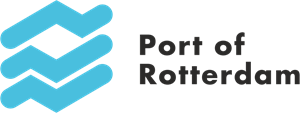Overview
Propellers of ships generate high velocities in waterways near quay walls, jetties and locks. Often, bed protection is installed to prevent instability of hydraulic structures due to propeller scour. Large costs can be associated with its construction. Guidelines for the design of bed protection exists, but propeller-induced loads are far from fully understood and current design guidelines may not always result in optimal bed protection designs. Therefore, a working group on propeller jet research was established, headed by the CROW and Rijkswaterstaat, with the long-term aim to improve design guidelines. The research carried out within this working group aims to reduce design-related uncertainty, potentially save construction materials and reduce costs. The TKI research program “SOP Schroefstraalbelasting onderzoeksprogramma - DEL 130” was carried out in the context of this propeller jet working group, aiming to increase the understanding of transversal bow thruster loads reflected off a vertical quay wall and providing validation data for numerical models.
Within the TKI SOP project, physical scale model measurements are combined with field observation, detailed numerical computation and compuation based on existing design guidelines. The performed scale model tests aim to visualize and characterize the flow field generated by a bow thruster. The following work packages have been carried out:
- Field measurements in Ghent (Rijkswaterstaat/TUDelft, 2020)
- Numerical CFD simulations (MARIN, 2023)
- Physical scale model measurements (Deltares, 2021-2023)
In 2020 field measurements have been performed in the Port of Ghent on flow velocities induced by a bow thruster reflected on a vertical quay-wall. Flow velocities and pressures were measured along the quay-wall and near the bottom. Field measurements provide valuable insight into the flow phenomena in prototype scale. However, due to practical limitations in the field, assessing the influence of all relevant parameters is not feasible. Therefore, using the field measurements as basis, scale model tests and numerical simulations have been performed to extend the existing database by a systematic variation of parameters. The numerical simulations have been performed developed by MARIN and the scale model tests have been performed by Deltares.
The field measurements performed in the Port of Ghent in 2020 are used as basis (i.e. prototype) for the physical scale model research. The prototype dimensions have been scaled down to an appropriate scale and a systematic variation of the key parameters were performed, aiming at characterizing the three-dimensional flow field originated by a jet reflected on a vertical wall resulting from a bow thruster. The main goal of the scale model tests is to improve the general understanding of the flow behavior, and to create a benchmark dataset for validation of CFD models.
Promotional video
Timeline
In 2020 field measurements were performed in the Port of Ghent. The scale model tests have started in 2021 and continued in 2022. The final physical scale model measurement report, including analysis of the results and comparison to existing design guidelines, has become available in 2023. Also the report on detailed numerical model simulations has become available in 2023.
Measurements
Particle Image Velocimetry (PIV) is used to visualize and characterize the turbulent jet created by a bow thruster. In the scale model research, the following parameters were varied between tests:
- Under-keel clearance
- Quay-wall clearance
- Rotational speed of the propeller (jet flow velocity)
- Vessel position/PIV measurement plane
- Use of multiple propellers
- Bed roughness
Results
The different project deliverables can be accessed here:
- Field test report Ghent (MSc. thesis Jim Tukker, 2021): Report- TUDelft repository
- Physical scale model test report Deltares (without Appendices) : Characterization of flows induced by propeller jets_no appendices
- CFD report MARIN: CFD report
The measurement data of the physical scale model tests can be made available upon request. Some examples of the type of data that is avaible is shown below. More detailed information is provided in the measurement report (see link above).
Time-averaged velocity maps (ux component) for a free-jet (left), confined jet at high UKC (center) and confined jet at low UKC (right)
The physical scale model dataset that has been obtained within this research project is extensive and characterizes flow induced by a transverse bow thruster in very high detail. The data can therefore be used as a benchmark for numerical model validation and further optimization of design guidelines for bed protections. The research shows that highest flow velocities occur for smallest wall and underkeel-clearances. Present design guidelines predict the magnitude of maximum horizontal velocity near the bed well for most tested situations, however farther away from the quay wall guidelines seem to be overly conservative, providing room for optimization of bed protections.
Partners
The following partners are part of this project:
- Rijkswaterstaat
- Port of Rotterdam
- MARIN
- DEME
- BAM Infraconsult
- Boskalis
- North Sea Port Flanders
- SmartPort













